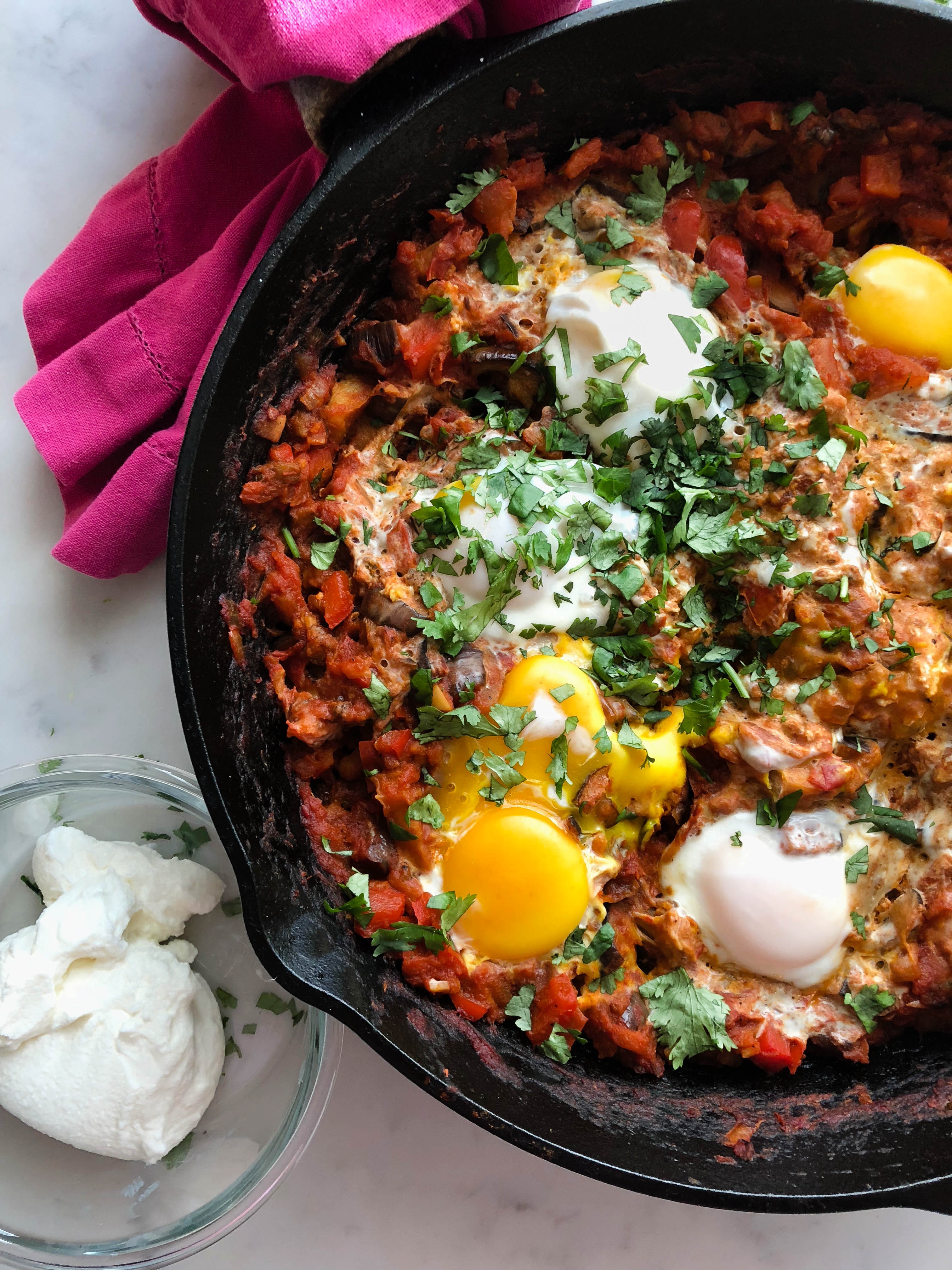Naturally Nonstick Cast Iron: the Holy Grail
After purchasing your very first cast iron pan, beginning to cook with it can seem a bit overwhelming. There's all sorts of urban legends out there that make it seem intimidating. If you listen to them too closely, you'll learn that everything will stick, you'll rust up, and nothing will be okay. Don't worry, those aren't true if you follow the right process! We're here to clear these myths up for you and focus on the cold hard truth that'll set you on the track to a perfectly seasoned, naturally nonstick cast iron pan that will serve you well for the next century or two. Cast iron skillets last nearly forever when they're properly taken care of. In an age of products that are built with planned obsolescence in mind, the longevity of cast iron pans stands out strongly.

Let's start off by identifying the type of finish that your pan came with.
- Unseasoned pans come with a dull gray surface that simply won't be able to be used right away as you may have intended before reading this blog. These pans need to be treated in the proper manner if you want them to develop the naturally nonstick, heat retention powerhouse that these have the potential to be.
- Unseasoned pans require a few more steps when you're first getting started, but they're less user friendly than buying a pre-seasoned skillet. Not everyone has the time to spend making sure that their pan is in the proper condition to sear that beautiful ribeye you just purchased from your local butcher. You don't want to deal with your food sticking to a improperly cared for pan, especially if it's an expensive cut of meat. We'll go over some steps to take if you never want that to happen.
- Seasoned pans have a black surface that looks as though it's been coated in a light surface of oil and left to sit.
- What exactly is factory pre-seasoning, and why does it matter? Pre-seasoning involves a layer of oil, or even potentially a wax that has been applied to the pan in the post-production stage in order to keep it from rusting while it sits on the shelf. Do you have to season it all over from the beginning when you get one of these? The simple answer is no. However, you will have to maintain the coating. Lodge is one of the more readily obtainable pre-seasoned brands on the market. These pans are one of the longest lasting items that you can purchase at most big box stores, even Walmart carries them. This brand has a grouping of Pre-Seasoned cast iron skillet care steps that they recommend when re-seasoning a pan if it starts to lose that initial coating. You'll know when this occurs because the food will start to stick to the pan even if it hasn't burnt, it'll appear as a lighter grey color than the initial black that it started out with, and most visibly - it'll rust. A properly seasoned and maintained cast iron pan will NOT rust.
Do you want more time to pursue your culinary passions? Focus on creating, and leave the long term cleanup of your kitchen to our maids:
What's the point of purchasing a rusty, dusty, antique cast iron pan?
Some of the very best cast iron pans available for purchase can be found as rusty old paperweights that are lounging around a yard sale. These pans can potentially be dated back to the early 20th century, and the actual quality of the pan can be absolutely ideal for your cooking situation if they are properly restored. The molding process was not an efficient method to keep in the rotation of iron manufacturers, so a faster process was developed. Antique cast iron pans were once cast in solid molds that enabled them have a very smooth surface. The texture will be closer to a stainless steel pan when they are brought back to life. Modern cast iron is cast in a mold that is created out of sand, which is why you get the bumpy texture. The older pans can develop some fractionally better non-stick qualities, but there isn't a terribly big difference unless you're into minute details.
Why is seasoning important, and how does it work?
Cast iron pans are covered in microscopic cracks, pores, and rough areas that occur during the molding process. The first few meals you make in an unseasoned pan will stick to the surface, simply because they are seeping into these cracks, pores, and rough patches during the process of cooking. You can't easily move them around the pan because they're cemented in there as if a brick had mortar in the cracks.
- If you want your cast iron to have the desired non-stick properties, you're going to have to take away the ability for your food to adhere itself into those unseen cracks and pores. You'll also need to start a protective layer over the pan that will act as a shield, preventing the food from adhering to the pan itself. This is where a layer of fat comes into play.
- Fat is has an interesting molecular reaction when it comes in contact with both metal and oxygen. The process that is goes through is called polymerization. When fat is heated in a pan, fat molecules break down from long molecules into shorter ones. This adheres to the bottom of the pan and builds a solid protective coating, which can be reminiscent of teflon when done enough times. If you repeat the process of oiling and building up that layer of polymerization you will get a thoroughly nonstick layer that is sure to sear the best steaks, and fry the best eggs - all without ever having to pry them off of the surface.
How do I take care of my unseasoned/rusty pan?
The Natural, Slow Method: The best way to build up seasoning naturally is to start off by cooking food that is high in fat content for the first few uses. The easiest way is to simply focus on cooking bacon for the first few times you use it on a hot stove. Stay away from bacon products that may have been cured in a sweetened solution, e.g. chipotle bacon, or brown sugar and maple flavored bacon. Those will stick and build up a sugary coating on the already unstable coating of your pan. Every time you heat up either fat or oil in your pan, the polymerization process will occur and your pan will progressively become more efficient at providing a nonstick experience.
How to Kickstart the Process Naturally:
- Scrub your pan thoroughly with a exfoliating material. The best way to do this is to pour a good amount of kosher salt into your pan, and rub it thoroughly into the surface with a slightly dampened paper towel. You want to build a area for the seasoning to adhere to in a strong manner. This does not damage your pan, in fact - in the future, this is a very effective way to safely clean your pan.
- Pour a healthy amount of a neutral cooking oil onto a paper towel. Don't be afraid to soak it, you want a thorough coating. Vegetable or canola oil are two of the more readily available option that work just fine, but grapeseed oil can be heated to an even higher temperature without hitting it's smoking point. If you're able to obtain a small quantity for seasoning the pan, this will enable you to build up thin layers of seasoning that you can stack for a thoroughly nonstick experience.
- Heat your oven to up to 200F. You want to bake the oil covered pan at a lower temperature for 45 minutes at a time. If you chose to use grapeseed, bump the temperature up to 350F and do shorter heat cycles, around 20-30 minutes in between applying layers of oil.
- Repeat this cycle over the course of a few days. Your pan should be good to go after just a few coatings of oil; however, it's a more efficient use of the heat to cook a meal in the oven while you season your pan. If you spread it out over the course of a few days, the whole process will be more efficient.
- Avoid using soaps that strip the layer of seasoning that you just built up. Try not to cook food that is high in acidic qualities such as tomato sauce in the pan until the process has taken its course and you're confident in the even nonstick coating.
Start using it as often as you can!
A properly seasoned cast iron pan will be the heat retaining workhorse of your kitchen. You'll find yourself using it for nearly everything that requires more heat than a low simmer would allow. After your pan has been seasoned thoroughly, you can safely begin to cook food that has a higher level of acidity, such a tomato based dishes. I would recommend that you immediately clean your pan directly after every use as it becomes easier and easier every time you take care of it. Practice the french method of Mise en place (putting in place), the act of cleaning up after every step of your cleaning process without leaving it for later. The most efficient manner is to give the pan a quick rinse under your faucet. Dump about a quarter cup of kosher salt into the pan and give it a thorough scrub with a damp paper towel. You don't have to scrub too hard, just enough to free up the burnt bits from your cooking session.
I recommend Shakshuka (North African–Style Poached Eggs in Spicy Tomato Sauce), it's been popping up on trendy menus all across the states over the past few years. You'll be surprised by how often you'll find yourself craving it after you taste it for the first time.
Check out our exhaustive list of natural kitchen cleaning processes to learn more environmentally safe ways that take care of any built up grimeThe Ultimate Guide to Naturally Cleaning Your Kitchen.

